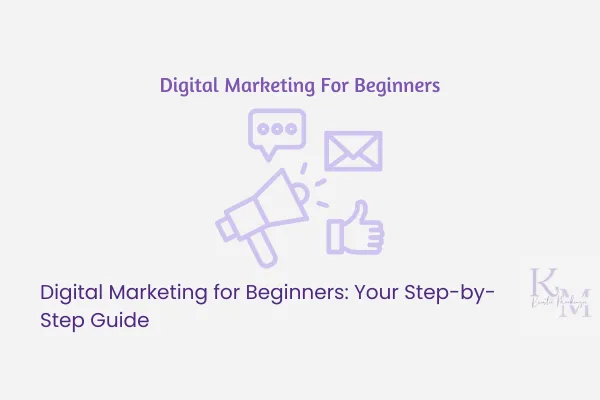
Digital Marketing For Beginners
Digital Marketing for Beginners: A Step-by-Step Guide
Businesses need an online presence to succeed, and digital marketing plays a crucial role in building that presence. But for beginners, the world of digital marketing can be overwhelming. With so many channels, strategies, and tools, where do you even begin?
In this blog post, we’ll break down the basics of digital marketing, giving you the foundation you need to get started.
What is Digital Marketing?
Digital marketing refers to the use of online platforms and tools to promote a business or brand. Unlike traditional marketing (e.g., print ads, TV commercials), digital marketing allows businesses to target specific audiences, track performance, and optimise campaigns in real-time. The key areas of digital marketing include:
Search Engine Optimisation (SEO): Improving your website's visibility on search engines like Google.
Search Engine Marketing (SEM): Paid advertising strategies, such as pay-per-click (PPC), to drive traffic to your website.
Social Media Marketing (SMM): Using social platforms like Facebook, Instagram, and LinkedIn to engage with your audience.
Content Marketing: Creating and sharing valuable content (blog posts, videos, etc.) to attract and retain customers.
Email Marketing: Using emails to nurture relationships with your audience and encourage conversions.
Affiliate Marketing: Partnering with other businesses or influencers to promote your products or services.
Analytics and Data Reporting: Using tools like Google Analytics to track your digital marketing performance.
Step 1: Build Your Online Presence
The first step in digital marketing is to create a strong online presence for your business. Start with a well-designed website that clearly explains who you are, what you do, and how customers can contact you. Make sure your website is mobile-friendly, fast, and easy to navigate.
Step 2: Understand SEO Basics
Search engine optimisation (SEO) is key to getting your website noticed. SEO involves optimising your website so it appears higher in search results when users search for keywords related to your business. For beginners, focus on:
On-page SEO: Optimising your website's content, titles, meta descriptions, and images.
Off-page SEO: Building backlinks from other reputable websites to boost your site’s authority.
Step 3: Start Small with Social Media
Social media platforms are powerful tools for connecting with your audience. Choose 1-2 platforms where your target audience is most active (e.g., Facebook, Instagram, LinkedIn) and start engaging by posting valuable content, responding to comments, and using social media ads to promote your business.
Step 4: Use Content to Build Authority
Content marketing helps you establish authority and trust in your industry. Start by creating blog posts, how-to guides, or videos that provide valuable insights to your audience. Remember, the goal of content marketing is not to sell directly, but to educate and build relationships with your audience.
Step 5: Leverage Email Marketing
Email marketing is an effective way to stay in touch with potential and existing customers. Start by building an email list with people who are interested in your business. Then, send regular newsletters, promotions, or product updates to keep them engaged.
Step 6: Measure and Optimise
One of the biggest advantages of digital marketing is the ability to track and measure everything. Use tools like Google Analytics to monitor your website traffic, see where your visitors are coming from, and identify which marketing strategies are driving the most results. From there, you can tweak and optimise your campaigns for better performance.
Your Path to Success
Digital marketing may seem overwhelming at first, but by breaking it down into manageable steps, you can build a solid foundation for your online presence. Start with SEO and social media, create valuable content, and use email marketing to nurture your audience. Over time, you’ll begin to see the benefits of your efforts as you attract more leads and grow your business.
